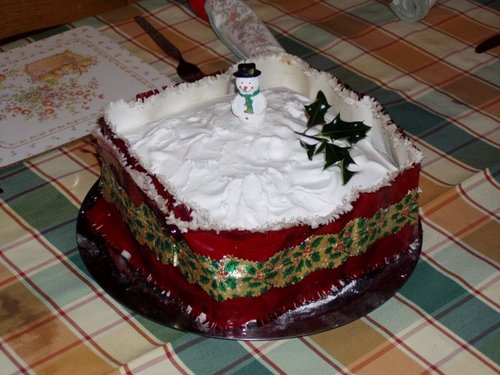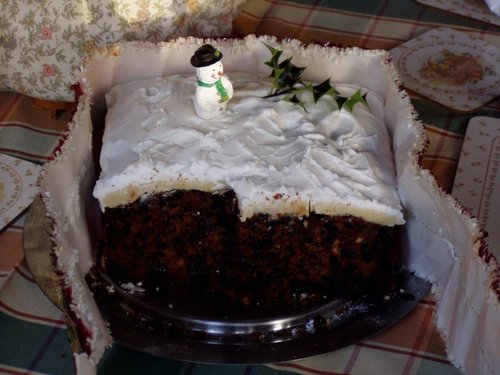Sunday, December 30, 2007 9:40 PM
ノーイチゴクリスマスケーキ
(Note: I was intending to post this on Boxing Day, but Real Life got in the way: I hope the subject is still fresh in people's minds).
If you're not familiar with Japanese, the title of this entry, in Katakana script, reads "nô ichigo kurisumasu kêki": literally, "no-strawberry Christmas cake".
If you're not familiar with Japan, then "kurisumasu kêki" is not Christmas cake as you know it. For a start, it has a strawberry on top, and beneath the soft whipped-cream "icing" there's a layer or two of sponge.
If you're not familiar with my humble self, then you may not be aware that I value the strawberry as a seasonal fruit, one which ripens in June and is associated (in an ideal world) with lashings of cream, pleasant sunny afternoons early in the British summer, and the faint babble of commentary from Wimbledon in the background. The strawberry is not a fruit naturally ocurring in the midst of winter, and is as out of place on a Christmas cake as a piping hot o-nabe (Japanese stew) would be on a humid summer's day in Tokyo.
Hence, I hereby present to you a real, 100% genuine home-made (by this Penguin's dear mother) British Christmas cake, and invite you to Spot the Strawberry.
The completed Christmas cake:

Normally my mother makes round Christmas cakes, but for some reason it's square this year. The white stuff is icing: solid icing, the sort that breaks teeth. The holly is a traditional decoration, as holly bushes (in contrast to strawberry plants) quite often bear berries in winter. The smiling snowman is less traditional, but Penguin Family Christmas Cakes have always carried this kind of jocular figure; there used to be a miniature Christmas tree, a skiing Santa and one or two other objets which have gone missing over the years or just become unpalatably old. The colourful wrapping around the cake is just that; as you can see in the next photo, the icing doesn't go down the side of the cake.
Inside the Christmas cake:

Unfortunately my camera isn't the best, and the lighting conditions combined with the whiteness of the icing mean the interior isn't very clear. However, you can see that below the icing there's a layer of marzipan, which enables the the icing to stick to the top of the cake (and also tastes nice).
The cake itself is very rich and heavy - basically a very rich fruitcake - containing among others dried fruit, mixed peel, almonds, nutmeg, mixed spices, black treacle, glacé cherries, brandy and eggs. No strawberries. It's not something you want to make in a hurry: apart from taking around 4 hours to bake, the completed cake needs a few weeks to "mature", during which time it can also be "fed" with additional brandy etc. However, if kept in a reasonably cool and dry environment the cake will remain perfectly edible for several months into the New Year - useful if you can't eat it all at once.
If you want to try making a Christmas cake yourself, here are some useful recipies:
- The Classic Christmas Cake (Delia Smith)
- Traditional British Christmas Cake Recipe
- Rich Fruit Cake Recipe
Disclaimer: I have no practical experience in the making of an actual Christmas cake and my mother is not on hand to correct me on the details, but I hope this gives a general impression of how things should be.

(I tried to comment on this post awhile back but my connection seemed glitchy and it got lost!)
Thanks for posting about this (and for the nifty pictures).
Lina: thanks for commenting (and using my "widgets")! The cake does taste as nice as it looks.